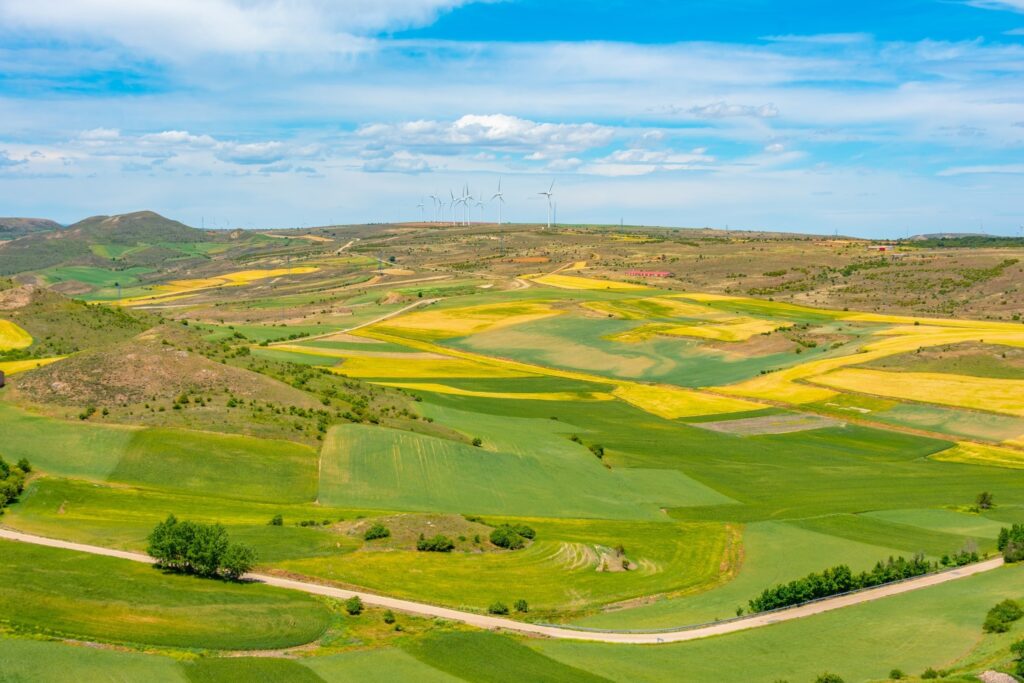
Agriculture is one of the oldest industries in recorded history. Civilizations as we know them didn’t coalesce until humans discovered how to plant crops and irrigate land to ensure a bountiful harvest and sufficient food stores for lean winter months. As farming techniques improved, people congregated in areas with fertile soil and sufficient irrigation, creating towns and cities. But today, more people live in urban areas than rural ones, meaning that fewer and fewer people understand how a modern farm operates. Unless you were raised in a rural household or spent some time on a farm during your childhood summers, there may be a lot of farming terminology you’re unfamiliar with.
Acre: The standard unit of measurement for farmland. One acre is 43,560 square feet or 0.405 hectares.
Agribusiness: This encompasses the entire chain of commercial farming, from sufficient production to earning a profit up to investments and modernization of equipment to reduce costs and increase profit margins. Agribusiness is really anything related to the business of farming.
Agriculture: The practice of raising and cultivating livestock and plants. Without the development of agriculture over the millennia, society as we know it could not exist.
Agronomy: Agronomy is the science of growing and raising crops on a farm.
Aquaculture: Aquaculture is farming but in water. Aquaculture can involve raising fish in ponds or even plants grown in flooded fields or ponds.
Barn: The typical barn is a large, two-story, roofed structure used for housing animals and feed. Modern barns come in a variety of sizes and styles depending on the farmer’s needs and the type of animal they will be used for.
Bovine: Anything bovine is related to cattle or the raising of cattle.
Bushel: A bushel is the standard unit of measurement for crops. A modern dry bushel measurement is 64 pints. However, any single bundle or measurement of a dry crop or product can informally be referred to as a bushel as well.
Co-Op: A co-op, or farmer cooperative, is a group of farms and farmers working together for the mutual benefit of all members. Farming co-ops offer many benefits to members, including greater purchasing power, wider product distribution, and greater negotiating power.
Combine: Combines are large, tractor-like vehicles used for harvesting grain.
Commodity: A commodity is a crop that is traded in markets and on futures exchanges. Examples include corn, oranges, rice, and wheat.
Compost: Compost is decomposed organic matter, usually made from accumulated food scraps and other matter. Compost provides nutrients for plants and helps enrich the soil.
Contour Farming: This practice involves planting seeds at a perpendicular angle to the slope of the land to decrease soil erosion.
Cover Crop: A cover crop’s purpose is to improve and protect the soil between the plantings of the regular crop.
Crop: This can be anything grown, cultivated, and harvested on a farm. Crops can be used for animal feed or sold for profit.
Crop Rotation: The practice of planting different crops in successive seasons prevents draining the soil of vital nutrients.
Erosion: The relocation of soil by wind or water; erosion is a major problem faced by large-scale farmers. The infamous Dust Bowl of the Great Depression was caused in part by soil erosion stemming from poor farming techniques.
Ethanol: Ethanol is an alcohol-based fuel derived from a number of organic sources, primarily corn.
Feed: There are three types of animal feed on a farm: roughage, concentrates, and mixes. Each type of animal will require its own specialized feed in line with its dietary needs.
Fertilizer: Fertilizer is any organic or inorganic substance or chemical applied to the soil to help provide nutrients to crops.
Fodder: Stalks, leaves, and other detritus left behind after harvest that can be used for animal feed. Fodder is an example of roughage.
Fungicide: A fungicide is a chemical used to treat fungi-infested plants and seeds. The chemical may be organic or inorganic.
Genetically Modified Organism (GMO): GMO crops are those in which the plant’s DNA has been scientifically altered to produce certain characteristics, like greater fruit yield, better color, or resistance to pests. GMOs are controversial because some believe this modification goes beyond traditional farming and plant breeding and could accelerate the extinction of certain strains of seeds.
Herbicide: A chemical applied to undesirable plants, such as weeds, to kill them. The chemical may be organic or inorganic.
Irrigation: Irrigation is providing water to fields and crops through sprinklers, hoses, or other means.
Organic: Organic crops are grown without synthetic chemicals.
Pesticide: This is a chemical that kills insects harmful to plants. The chemical may be organic or inorganic. Some pesticides can also kill the plant if used improperly. Produce treated with pesticides must be washed before being eaten.
Silage: Silage is feed stored in an airtight silo. The feed is typically grass or other fodder material that can be used as food for the winter.
Silo: Shaped almost like a rocket on a launch pad, a silo is a large, cylindrical building for holding animal feed.
Thinning: Thinning is the process of uprooting and removing weaker plants in order to direct more sunlight and natural resources toward healthier plants.
Tillage: Tilling the soil means tearing, loosening up, and aerating the ground before planting.

